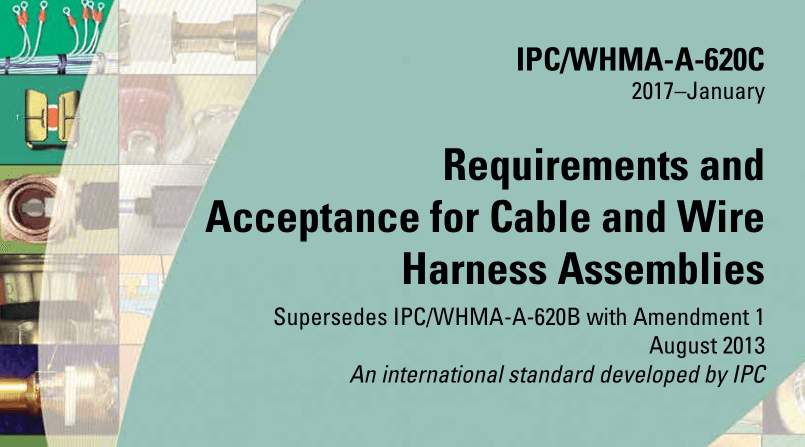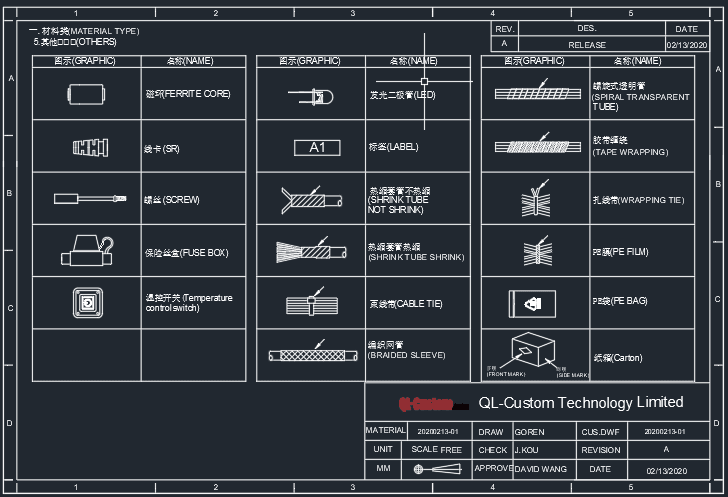Der wichtigste Punkt der Qualitätskontrolle von Kabelbäumen IPC620

Der wichtigste Punkt der Qualitätskontrolle von Kabelbäumen IPC620 Kontaktieren Sie uns, um das gedruckte Buch IPC620 in englischer Sprache zu erhalten I. Prozesse bei der Herstellung von Kabelbäumen Zu den Prozessen bei der Herstellung von Kabelbäumen gehören unter anderem folgende: Schneiden: Bezieht sich auf das maschinelle oder manuelle Schneiden von elektronischen Drähten oder Kabeln auf die erforderliche Länge, ohne die Isolierung oder den Außenmantel zu beschädigen. Abisolieren des Außenmantels: Der Außenmantel bezieht sich in der Regel auf den Kabelmantel. Die Abisoliermaschine darf beim Abmanteln des Außenmantels die Isolierung der Adern nicht zerkratzen oder einschneiden. Jegliche Schnitte, Brüche, Risse oder Spalten in der Isolierung (nicht gezeigt). u Die Dicke der Isolierung ist um mehr als 20% reduziert. u Unebene oder ausgefranste Stücke der Isolierung (Ausfransungen, Schwänze und Anhängsel) sind größer als 50% des Außendurchmessers der Isolierung oder 1 mm [0,039 Zoll], je nachdem, welcher Wert größer ist. u Die Isolierung ist verkohlt. u Die Isolierung ist in die Drahtlitzen eingeschmolzen. Abisolieren des Kerndrahtes: Stellen Sie die Abisoliermaschine auf die gewünschte Abisoliergröße ein und achten Sie darauf, dass Sie die Kupferdrähte nicht zerkratzen oder schneiden. Crimpen: Wählen Sie die geeignete Klinge entsprechend der Kontaktgröße. Crimpen Sie den vorbereiteten Draht mit dem Crimpteil des Anschlusses unter Verwendung der Klinge und stellen Sie sicher, dass die Crimpung fest ist und dass das Aussehen und die Zugkraft des gecrimpten Anschlusses den Normen entsprechen. Steckverbinder aufsetzen: Stecken Sie die qualifizierten gecrimpten Anschlussdrähte in das passende Steckergehäuse. Ein deutliches Klickgeräusch ist zu hören, wenn der Stecker vollständig eingesteckt ist. Drähte verdrillen: Stellen Sie die Verdrillmaschine auf die richtige Höhe ein, um sicherzustellen, dass die Kupferdrähte nicht plattgedrückt oder verheddert werden und der verdrillte Leiter eine gleichmäßige Spiralform hat. Verzinnen: Flussmittel auf die vorbereiteten...
Mehr lesen "Wie erstellen wir Kabelbaumzeichnungen?

Überblick über die Notwendigkeit und Bedeutung von Kabelbaumzeichnungen Kabelbaumzeichnungen sind unerlässlich, um eine klare und detaillierte Darstellung des Kabelbaumlayouts, der Verbindungsbeziehungen und der Komponenteninformationen zu erhalten. Diese Zeichnungen gewährleisten die Genauigkeit, Zuverlässigkeit und Sicherheit des Kabelbaums. Sie veranschaulichen die Verlegung des Kabelbaums, einschließlich der Anfangs-, End- und Zwischenverbindungspunkte, sowie den Verlauf des Kabelbaums. Darüber hinaus werden in den Zeichnungen die Verbindungsmethoden und die Beziehungen zwischen den einzelnen Kabeln innerhalb des Kabelbaums dargestellt. Als primäre Informationsquelle für die Kabelbaumproduktion spielen diese Zeichnungen eine grundlegende und entscheidende Rolle im Fertigungsprozess. Die Kabelbaumzeichnungen basieren auf den Zeichnungen der Kunden: Der Prozess von QL-Custom vom Eingang der Anfrage bis zur Einreichung der Zeichnungen zur Überprüfung durch den Kunden: Nach Erhalt einer Anfrage, einschließlich Kundenzeichnungen oder Mustern, legen unsere Ingenieure die Beschaffungsstrategie fest, unabhängig davon, ob es sich um Original- oder inländische Materialien handelt. Sie holen dann Angebote von mehreren Lieferanten ein und vergleichen die Preise, um dem Kunden die beste Option anbieten zu können. Nach der Preisbestätigung wird eine Musteranforderung eingereicht. Die Ingenieure erstellen Zeichnungen auf der Grundlage der vom Kunden zur Verfügung gestellten Informationen oder Muster. Nach interner Prüfung und Genehmigung werden die Zeichnungen zur Bestätigung an den Kunden geschickt. Zeichnungserwägungen und Details - Analyse der Kundenzeichnung zur Erstellung unserer Zeichnung: Wie oben dargestellt, besteht eine typische Zeichnung aus sieben Hauptabschnitten: Zeichnungsinformationen: Teilenummer des Kunden, interne Teilenummer, Zeichner, Prüfer, Revisionsstand, Datum, usw. Revisionshistorie: Details zu allen Änderungen, die an der Zeichnung vorgenommen wurden. Qualitäts- und Prüfanforderungen: Spezifische Normen und Tests, die der Kabelbaum erfüllen muss. 2D-Layout: Eine umfassende Ansicht, die die Platzierung der Komponenten, Kabellängen und andere wichtige Fertigungsdetails zeigt. Stromlaufplan: Veranschaulicht die Punkt-zu-Punkt-Verbindungen innerhalb des Kabelbaums. Materialliste (BOM): Listet alle Komponenten auf, einschließlich Drähte, Klemmen, Steckverbinder und Ummantelungen, mit Mengenangaben und internen Teilenummern. Verpackung...
Mehr lesen "